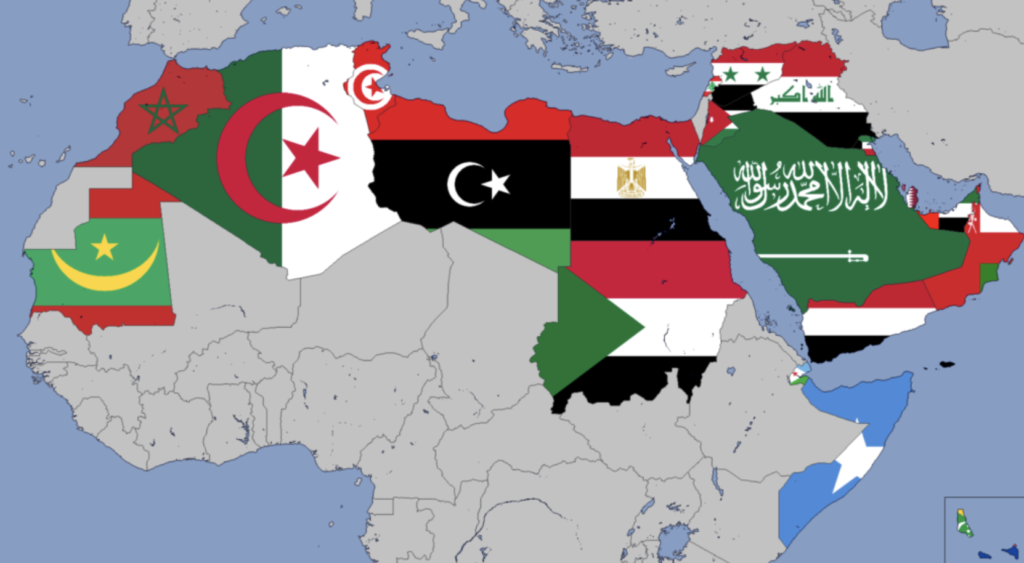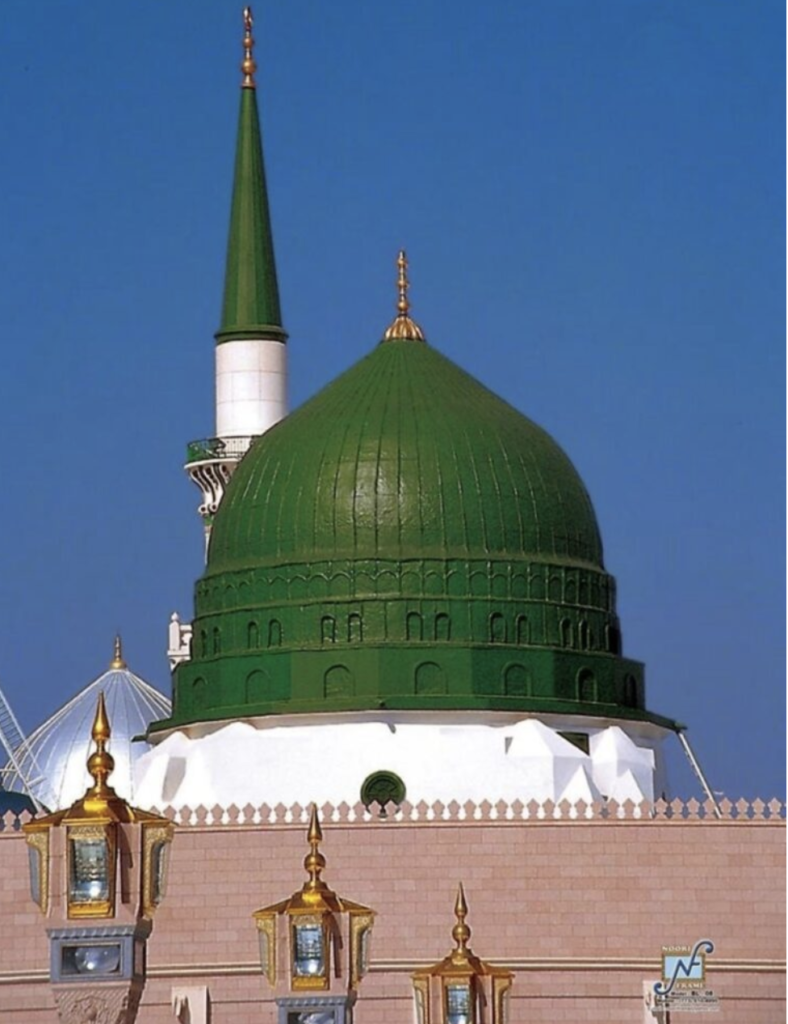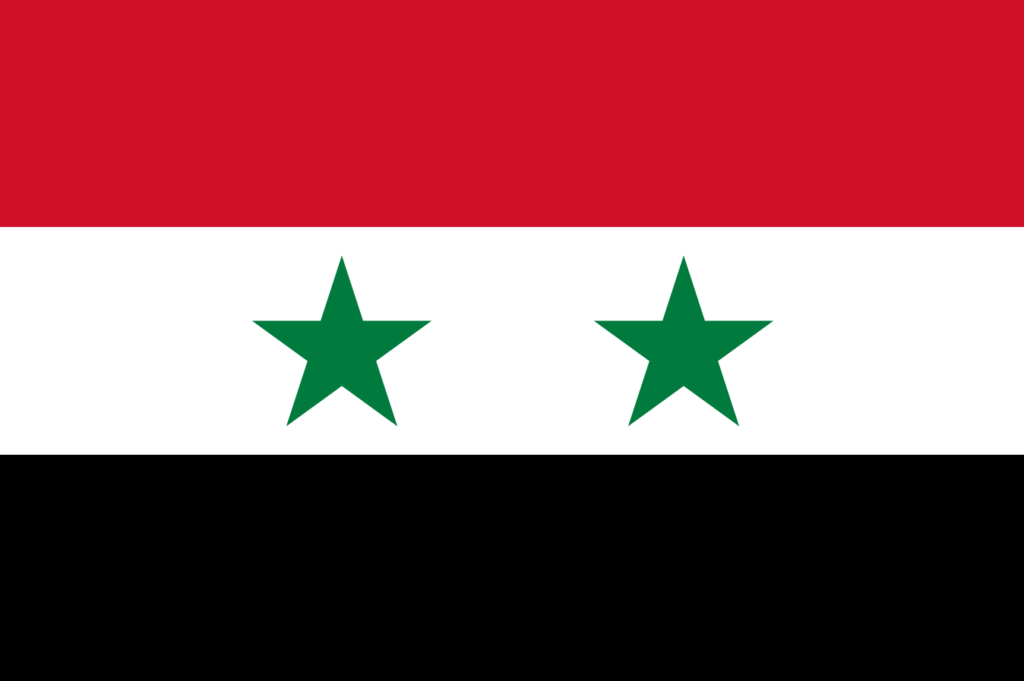Flags of the Arab World

By Liam Nagle / Arab America Contributing Writer
Flags can help to tell you a lot about a country. There’s no shortage of what you can have on your flag – many come with a large variety of symbols, colors, and even sizes. But because of this, the characteristics of the flags don’t always have similar meanings with one another – for example, the color white on one might be used to symbolize freedom, but the same color on another flag could instead represent peace. Nevertheless, there are many exceptions to this – and the Arab world is one of them. Much of the Arab world use similar colors and patterns for their flags: a horizontal tricolor with red, white, black, and green being used. And most of the time, these shapes and colors actually do have similar meanings. So what do all of these mean?
The Colors of the Flags

Most of the Arab world usually uses some combination of four different colors – green, black, white, and red. The color green is frequently used to represent Islam, even outside of the context of flags. Aside from flags, you might see mosques, clothing, and seals that use the color green due to this association. This is for a variety of reasons, but was largely due to its connotations to the idea of Islamic paradise and paradisical imagery. Additionally, a number of figures in Islam are also associated with the color green, such as the Prophet Muhammad, as well as al-Khidr (or “the green one”). The color black is associated with the first and third caliphates, the Rashidun and Abbasids. Both of these entities used the Black Standard as their flag, which was a simple flag in all black. White is symbolic of the Umayyad Caliphate, the second caliphate after the Rashidun, who used an all-white banner as their symbol. And finally, red is used to symbolize the Hashemite dynasty, one of the familial descendants of the Prophet Muhammad, and whose banner uses the color red.
The Horizontal Tricolor and Chevron

Flag of the Arab Revolt (1916-1918). Picture: Wikipedia Commons
Many flags of the Arab world also use a similar pattern – a horizontal tricolor, sometimes with a chevron on the left side, often featuring the colors green, black, white, and red. This tricolor originated twice during the 20th century. First, the Arab Revolt against the Ottomans in the 1910s used a black, green, and white tricolor with a red chevron, marking the first time that all four of these colors were used simultaneously on the same flag or banner. This also marked the first use of the red chevron, which was used particularly to represent the Hashemite dynasty – of which the leader of the Arab Revolt, Hussein bin Ali, was the head of. The Arab Revolt itself had hoped to establish its own caliphate, showing why they adopted such a flag that used plenty of Islamic imagery. Second, the Egyptian flag after the 1952 Egyptian Revolution adopted a red, white, and black tricolor that subsequently became the basis for the Arab world’s Liberation Flag, which used the same colors and pattern. The flag of the Arab Revolt and the Liberation Flag both subsequently became the basis for the flags used by the Arab world today.
Other Common Attributes

There are also a number of less common, albeit still shared, attributes between many of the flags. For example, a commonly-shared attribute is the inclusion of a crescent and five-pointed star, which can be found on the Algerian, Tunisian, Libyan, and Mauritanian flags. The star and crescent symbol is a common symbol within Islam and even includes usage in Muslim countries outside of the Arab world, such as Turkey and Pakistan. Although the crescent appears to be a crescent moon, it has also been suggested that the crescent is actually representing either Venus or the Sun during an eclipse. While this symbol has a long history, with some use during the medieval ages and some stating that its usage could go as far back as ancient Mesopotamia, it was popularized due to its usage by the Ottoman Empire – and that the crescent and star’s association with Islam is because of this.
Another common element of many Arab flags is the inclusion of Islamic phrases on the flag. The most obvious use of this is in the Saudi Arabian flag, which includes the shahada: “There is no deity but God; Muhammad is the Messenger of God”. Another phrase can be seen on the current flag of Iraq, which includes the takbir: “God is Greatest”. A number of flags outside of the Arab world also use such religious inscriptions, such as Iran, Somaliland, and the former flag of Afghanistan.
A final symbol that used to be more prominent, but is now more rarely seen, is the inclusion of five-pointed stars in the center of a tricolor flag. The flag of Syria currently uses such stars, including two within the center white stripe. However, Iraq, Egypt, and Egypt have used such stars in the past. This is derived from the 20th century notion of pan-Arabism, the idea that Arab nations should unite together in spite of what other differences they may have. The formation of the United Arab Republic, which was based on such principles, used a flag very similar to Syria’s, including a red-white-black tricolor and two green stars in the center meant to symbolize both Egypt and Syria. Iraq, after its 1963 coup, adopted a similar flag with three stars in the center – meant to symbolize that it wished to join the UAR’s union. And finally, North Yemen included the same color scheme but with one star in the center, and although its meaning appears unclear, it likely had some connotation with the UAR.
Conclusion
The Arab world has plenty of flags with shared characteristics. Many include a red, white, black, and green color scheme with a tricolor, with some even going as far as to include a chevron. These colors can be traced back to their ties to the Islamic caliphates, if not Islam itself. The tricolor pattern, on the other hand, has its routes in the Arab Revolt and the 1952 Egyptian Revolution, which popularized both the color scheme and the pattern. Other characteristics include the star and crescent pattern also has its history in Islam, even if its pattern might be older than Islam itself. And finally, the stars in the center of the flags are from the concepts of Arab nationalism and pan-Arabism. It’s worth mentioning that the Arabs aren’t the only ethnic group that includes a similar color scheme in their flags – for example, Slavic countries have their own pan-Slavic colors of blue, red, and white. And looking at these flags, they can tell you a lot about what a country wants you to know!
Check out our Blog here!








